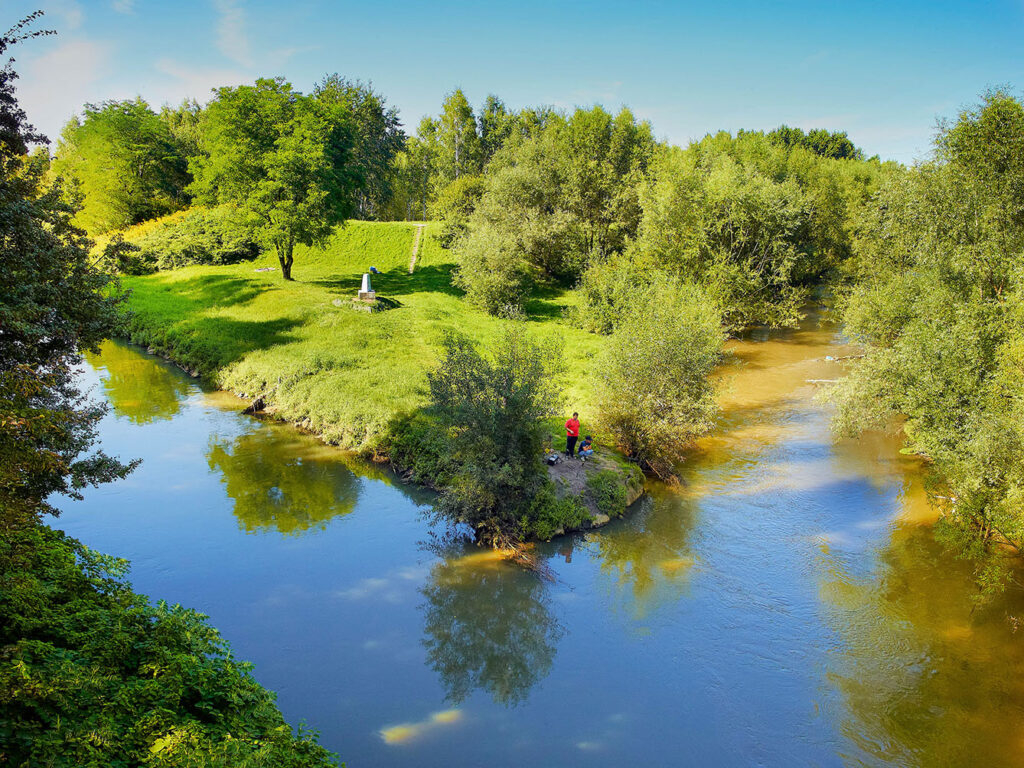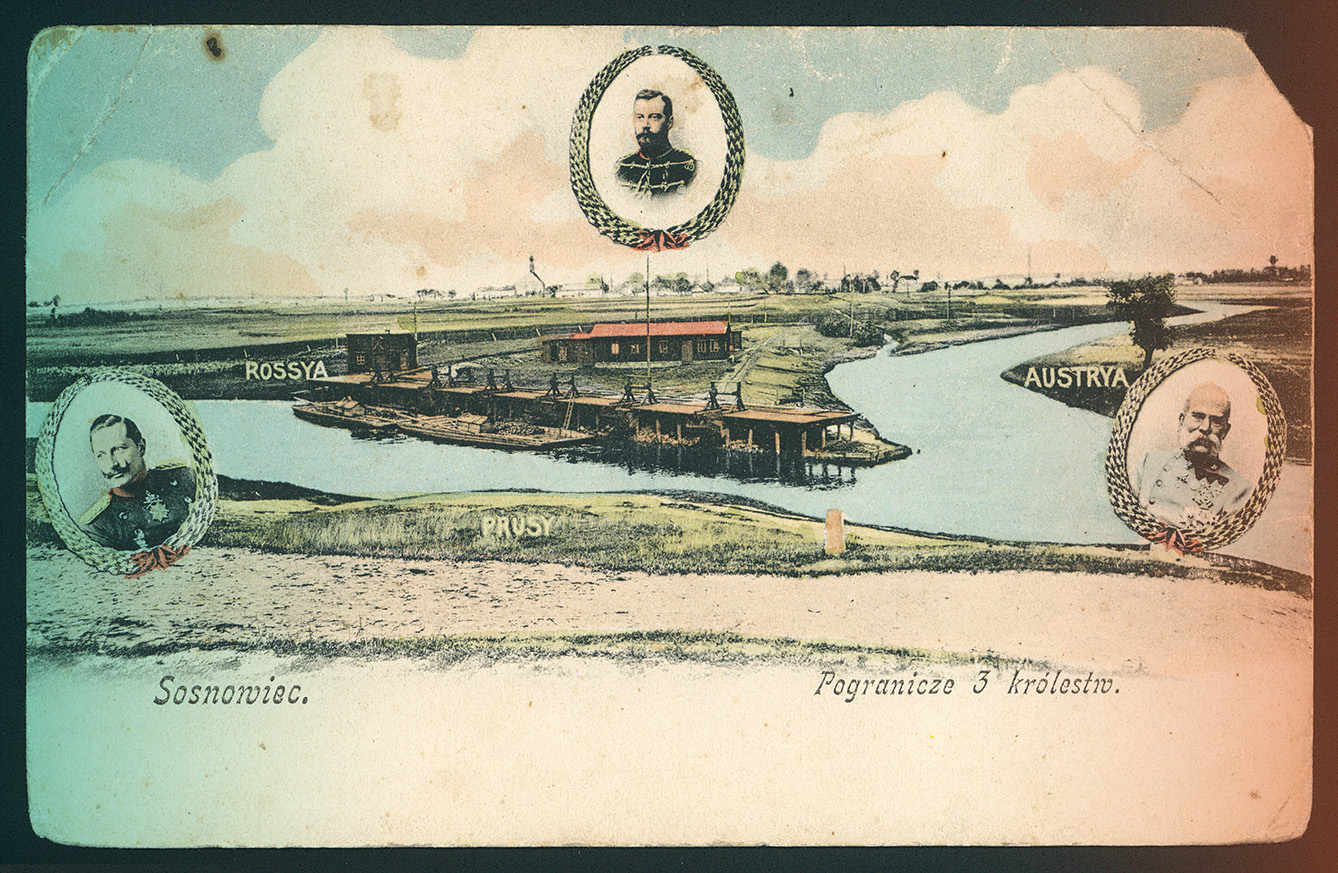Throughout the 19th century, the territory previously known as the Poland-Lithuania Commonwealth was divided amongst three empires: Prussia (modern-day Germany), Russia, and Austria. Occasionally, the borders of the divided land shifted due to wars. Sometimes, the conquering countries changed their names based on the ruling parties or internal changes, like when the Austrian Empire became the Austro-Hungarian Empire and Prussia became Germany.
Regardless, for almost this entire period, the borders of the three lands met at the confluence of two inconspicuous rivers with a common name: the Black (Polish: Czarna) Przemsza River and the White (Polish: Biała) Przemsza River. (In case you’re curious, here’s how to pronounce Przemsza.)

The meeting point was eventually named the Three Emperors’ Corner, and it remained the meeting point of the three lands until post-WWI. In the present day, the confluence is located in Poland near the town of Sosnowiec, not far from Cracow. Although not entirely forgotten, its current fame is nothing like during the period when it was the coveted confluence of three empires. (*Its original name was the Three Countries’ Corner (German: Dreiländereck), but it received its more lasting moniker once the German Empire was formed in 1871 and there were three actual emperors.)
Three Emperors’ Corner: A seat of politics – and tourism
During this golden age of empires, three Emperors, Franz Joseph I of Austria, Alexander II of Russia, and William I of Germany, actually met there in 1873, turning the Three Emperors’ Corner into a tourist spot widely known across Europe. As newspapers reported in the late 19th and early 20th centuries, the spot hosted 3,000 to 8,000 tourists per week, offering many attractions. One could take a tour on a steamboat or walk the border bridges, shop for souvenirs and send postcards from that very special place in Europe.
Considering the vast area that comprised each of the three countries, their tripoint could be described as the center of Europe. It is said that the most interesting part of the excursion was to see the difference: all the three countries were visibly unlike each other in landscape, culture, and economy. Today, the place celebrates not division but unity. After Polish accession to the EU, the mayors of the adjacent cities dedicated an obelisk to honor the event, and a second plaque was later added to commemorate “the former division of Europe and its unification.”







